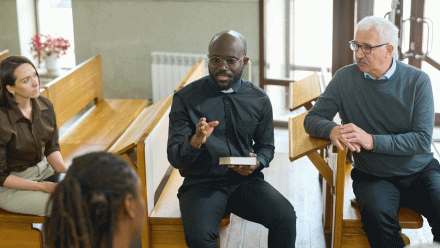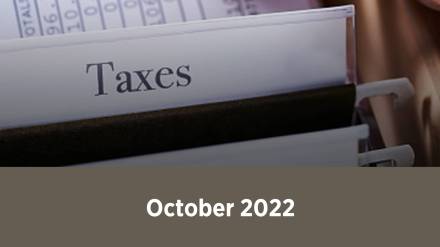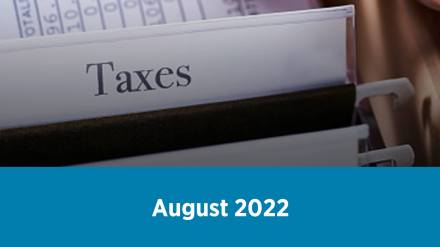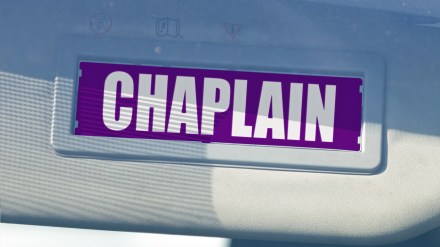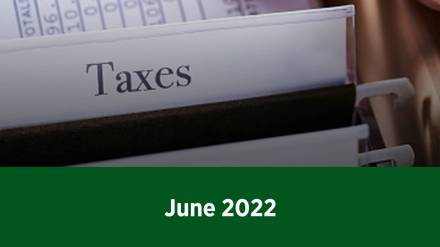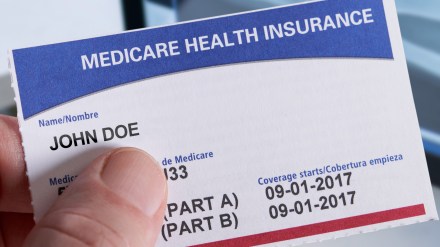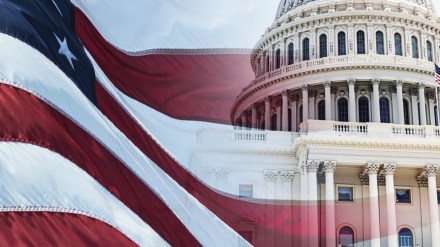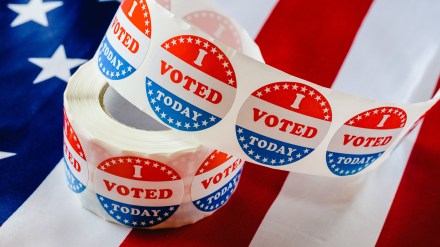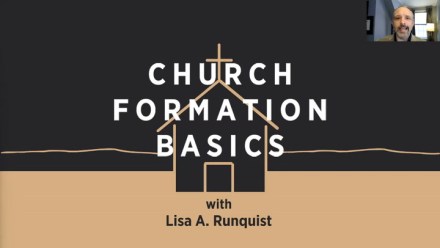Title VII of the Civil Rights Act of 1964 protects workers from discrimination based on race, color, religion, sex, or national origin. Since Title VII’s inception, the statute has included an exemption for “religious organizations.”
This exemption became more critical for many churches after the US Supreme Court interpreted Title VII’s term “sex” to include sexual orientation, sexual perception, gender identity, and transgender individuals (Bostock v. Clayton County, 140 S. Ct. 1731 (2020). But, the Supreme Court stated that its decision should not apply to religious organizations.
The Court’s words regarding the religious exemption bring little comfort to many in the religious community. But the Court did not indicate how it might rule regarding the religious exemption and the new definition of “sex.” Churches and the courts had already struggled with the application of the exemption for religious organizations. Now they face greater challenges in determining its application to the employment practices of religious organizations. This is especially true of the new definition of “sex,” if compliance with the new definition violates an organization’s religious beliefs.
This article examines the scope of this exemption and explores how the statute applies to churches and religious ministries.
History of Title VII
In 1963, President Kennedy asked Congress to pass comprehensive civil rights legislation. The Civil Rights Act of 1964 was passed the following year. The statute protected voting rights and prohibited discrimination in federal programs and public accommodations.
The Civil Rights Act was controversial from its initial drafting, with many in Congress opposing one part or another. Like many other difficult-to-pass bills, the bill was altered to gain enough congressional support to make it into law. For example, since the Tenth Amendment of the US Constitution limits the federal authority to matters of interstate commerce, Title VII was limited to employers engaged in interstate commerce with 15 or more employees for each workday during 20 weeks of a calendar year (42 U.S.C. § 2000e-2(a), et seq).
Note. The italics used in the quoted matter in the following section have been added for emphasis.
Another sticking point was its application to churches and other religious employers. The First Amendment of the US Constitution prohibits Congress from passing statutes restricting the free exercise of religion. The House Judiciary Committee requested a complete exemption for religious organizations from Title VII to reflect this constitutional requirement. The Senate disagreed, believing the request was broader than necessary under the First Amendment.
The Senate changed the exemption to read:
[Title VII] shall not apply … to a religious corporation, association, or society with respect to the employment of individuals of a particular religion to perform work connected with the carrying on by such … [organization] of its religious activities.
Afterward, the House agreed to the amended exemption, and President Johnson signed the Civil Rights Act into law.
But problems immediately arose in the enforcement of the religious exemption. The US Department of Labor (DOL) interpreted the exemption to apply only to members of that religious group employed to perform religious activities. This interpretation forced the DOL to decide what activities were religious and how many religious activities were required before the exemption could be applied to a specific position.
Congress reconsidered the religious organization exemption in 1972. The issue arose in the creation of the Equal Employment Opportunity Commission (EEOC). The final bill creating the EEOC deleted the word “religious” before the word “activities” in the statute.
Currently, Title VII states that it “shall not apply … to a religious corporation, association, or society with respect to the employment of individuals of a particular religion to perform work connected with the carrying on by such … [organization] of its activities” (42 U.S.C. § 2000e-1(a)).
The United States Congress Conference Report after the 1972 amendment stated:
The limited exemption … for religious corporations, associations, educational institutions or societies has been broadened to allow such entities to employ individuals of a particular religion in all their activities instead of the present limitation to religious activities.
The Conference Report also noted, however, that religious organizations “remain subject to the provisions of Title VII with regard to race, color, sex or national origin.”
What qualifies as a religious organization for a Title VII exemption?
Since 1972, the courts have created tests and criteria to determine a “religious organization” for Title VII’s exemption.
Lack of congressional guidance has left the exemption open to different interpretations by DOL, EEOC, law professors, and the courts. Even within some judicial districts, the judges do not interpret the exemption consistently. No universally accepted definition exists to identify a religious organization used in Title VII.
No single test exists, and no test is used universally for determining whether an entity qualifies as a religious organization. An IRS determination that the organization has church status has little or no bearing on whether the organization meets the Title VII religious organization test because the tests are different. After making that observation, the courts will typically look at, and weigh, one or more of these factors:
- whether the entity operates for a profit,
- whether it produces a secular product,
- whether the entity’s articles of incorporation or other pertinent documents state a religious purpose,
- whether it is owned, affiliated with or financially supported by a formally religious entity such as a church or synagogue,
- whether a formally religious entity participates in the [entity’s] management, for instance, by having representatives on the board of trustees,
- whether the entity holds itself out to the public as secular or sectarian,
- whether the entity regularly includes prayer or other forms of worship in its activities,
- whether it includes religious instruction in its curriculum, to the extent it is an educational institution, and
- whether its membership is made up of coreligionists.
LeBoon v. Lancaster Jewish Community Center, 503 F.3d 217, 226 (3d Cir. 2007).
While traditional churches may easily qualify, parachurch ministries have more difficulty. For example, the US Supreme Court rejected an appeal from the Washington Supreme Court, finding the state exemption from its state nondiscrimination statute for “religious organizations” did not protect the Seattle Gospel Mission from liability for failing to hire an attorney in a same-sex marriage case (Seattle Gospel Mission v. Woods, 142 S.Ct. 1094 (2022)).
Likewise, another court found that a downtown mission organization was not a religious organization for Title VII because it was not affiliated with a particular denomination or church (Scaffidi v. New Orleans Mission, 2020 WL 1531266 (E.D. La. 2020)).
In contrast, the Ninth Circuit Court of Appeals held that World Vision qualified for the religious organization exemption from Title VII. In a 2–1 decision, the court held that World Vision could terminate three employees because they changed their religious beliefs (Spencer v. World Vision, Inc., 619 F.3d 1109 (9th Cir. 2010)).
But the three judges could not agree on the test to evaluate whether an entity meets the definition of a religious organization. The dissenting judge would have limited the exemption to organizations that gather members together for prayer and religious instruction.
One of the judges affirmed World Vision’s status under this test:
(1) does the organization self-identify as a religious organization in its governing documents?
(2) does the organization engage in religious activities to further its religious purposes, and
(3) does it hold itself out to the public as a religious organization?
The other affirming judge added another factor to the above three-item list: Does the organization not engage in the exchange of goods and services for money?
From these brief examples, one can conclude that churches and parachurch ministries should examine the nine criteria listed above. From there, the church may determine how they can best meet the criteria for obtaining a Title VII exemption.
At a minimum, they should review their governing documents, incorporate a statement of beliefs into governance documents and policies, and represent to the public that they are a religious organization.
Title VII’s application
Once an organization believes it meets the qualifications required to be classified as a religious organization, it must determine what portion of Title VII’s nondiscrimination provisions apply.
An examination of the applicable court cases reveals three plausible, but inconsistent, interpretations (discussed below).
Understanding the foundation for various interpretations requires some basic understanding of the rules for statutory interpretation. All three interpretations utilize differing rules for statutory interpretation to reach different conclusions.
Since the US Supreme Court has not instructed the lower courts on the correct or preferred way to interpret the Title VII religious organization exemption, each court is free to interpret the statute using the US Supreme Court rules for statutory interpretation.
The US Supreme Court has adopted a general guide to statutory interpretation for use by the lower courts.
A complete review of the statutory interpretation rules isn’t possible for this article.
However, a few relevant rules should be noted.
First, the law should be given its plain meaning whenever possible.
Second, plain meaning should not be used if the language is ambiguous. Ambiguous means a reader could reasonably interpret the language in two or more ways.
If the language is ambiguous, the court should interpret the statute to give effect to every word because every word has a purpose.
If the statute remains ambiguous, the court should choose the interpretation to implement the congressional intent based on the legislative history.
Here, then, is a discussion of each interpretation and what each one might mean for a court’s decision.
Note. The italics used in the quoted matter in this section have been added for emphasis.
Interpretation 1: Textual or religiously motivated interpretation
The first interpretation is called the textual or religiously motivated interpretation. It indicates that the statute’s plain meaning requires that no part of Title VII applies to the employment practices of religious organizations.
Key point. This interpretation utilizes the first statutory interpretation rule: The statute should be given its plain meaning whenever possible.
The plain language of Title VII states that it “shall not apply … to a religious corporation, association, or society with respect to the employment of individuals of a particular religion to perform work connected with the carrying on by such … [organization] of its activities” (42 U.S.C. § 2000e-1(a)). If this interpretation is utilized, no other rules of statutory interpretation apply.
Under this interpretation, none of Title VII applies to the religious organization. A church is free to discriminate regarding applicants and employees based on race, color, religion, sex, or national origin. Based on this interpretation, if the church chooses not to hire a woman for a position because she is a woman, it is free to do so.
However, Congress has twice considered—and rejected—a blanket exemption for religious organizations. If a court found that the statute is ambiguous, the congressional rejection of this interpretation could invalidate this interpretation. Further, this interpretation potentially ignores the “employment of individuals of a particular religion” language.
Example. In 2023, the Fifth Circuit Court of Appeals left intact a lower court’s ruling in which it used the textual or religiously motivated interpretation method to find that Bear Creek Bible Church was exempt from Title VII as a religious organization (Briarwood Management, Inc. v. EEOC, ____ F.3d _______ (5th Cir. 2023)). This decision means the church could discriminate based on sexual orientation, sexual perception, gender identity, and transgender status without violating Title VII. The Fifth Circuit panel also ruled that the church could have different dress codes for men and women and require that employees use the bathroom associated with their biological gender.
Interpretation 2: The coreligionist interpretation
The coreligionist interpretation indicates that religious organizations may refuse to hire anyone not part of their denomination or church group.
Key point. This interpretation allows religious organizations to restrict employment to their denomination or church group.
The plain language of Title VII states that it “shall not apply … to a religious corporation, association, or society with respect to the employment of individuals of a particular religion to perform work connected with the carrying on by such … [organization] of its activities” (42 U.S.C. § 2000e-1(a)).
Applications vary
Some courts believe this language is ambiguous because it does not explicitly address how the exemption applies to the other protected classes. Some courts then looked at the legislative history. The 1972 amendment to Title VII added a statutory definition of religion. It states, “The term “religion” includes all aspects of religious observance and practice, as well as belief” (42 U.S.C. § 2000e-1(j)).
The authors of the 1972 amendment claimed the new language was to protect the religious rights of employees—not to expand the religious exemption of employers. Supposedly, the amended statute protected all religious organization employees instead of only those involved in religious activity.
Some courts have used this background in interpreting the Title VII religious organization exemption to prevent the application of Title VII to religious organizations only employing individuals who are part of the same denomination or church group.
This interpretation means that a Baptist church can require all its employees to be Baptist. It can also terminate an employee for failing to adhere to Baptist beliefs. It can refuse to hire Methodists. But the Baptist church must not discriminate against the other Title VII protected classes unless its discrimination is related to the church’s sincerely held religious beliefs.
Caution. All violations of such beliefs should provide comparable disciplinary actions. The inconsistent application of variances from their religious beliefs could lead a church into a potential Title VII violation if one of the protected classes is involved.
The US Supreme Court used this interpretation to allow a church to fire a gym worker at a facility owned by the church for failing to adhere to church beliefs and requirements (Corporation of the Presiding Bishop of The Church of Jesus Christ of Latter-day Saints v. Amos, 483 U.S. 327 (1987)).
The Ninth Circuit Court of Appeals has affirmed this approach twice. The Fourth Circuit Court of Appeals has also adopted this approach.
Interpretation 3: Belief and conduct interpretation
The third interpretation, called the belief and conduct interpretation, indicates that religious employers may discriminate based on religious beliefs as long those beliefs do not contradict the other protected classes of race, color, sex, or national origin.
Key point. This line of interpretation rejects the coreligionist and textual interpretation cases.
With the addition of the definition of religion, some courts believe that the artificial lines of church association were eliminated. Accordingly, no statutory basis exists for limiting the religious organization exemption to those who employ only individuals that are part of the denomination or church group.
Since the purpose of Title VII is to protect workers from specific types of discrimination, the exclusions from its coverage should be narrowly interpreted. These courts’ interpretation means that religious organizations may discriminate only based on the employee’s self-identified religious beliefs and practices that vary from the employing religious organization—and only if those beliefs do not relate to another Title VII protected class.
Example. A court affirmed the right of a Christian school owned and operated by a church to terminate a teacher who remarried after a divorce, contrary to the church’s teaching.
While the teacher was not of the same faith as the employer, she had agreed to follow the church’s teachings and beliefs while employed by the school. Since the teacher’s religious beliefs differed from the employer’s and were evidenced by her actions, the school could terminate her because it met the definition of a religious educational employer (Little v. Wuerl, 929 F.2d 944 (3d Cir. 1991).
With this interpretation, all potential applicants must review the organization’s religious beliefs before applying for the job and determine if such beliefs align with the applicants’ beliefs. Religious organizations may require potential applicants to take this step before applying for a position to attempt to come into alignment with this interpretation.
Suggestions for determining how to comply
Each church must determine how it will comply with Title VII. Here are four suggestions.
Purchase employment practices liability insurance
Every church with 15 or more employees should purchase employment practices liability insurance. This insurance benefits the church in two ways. First, it provides access to the insurance company’s risk management employment attorneys and HR professionals. Second, the insurance company will assist with the defense should an employee claim a Title VII violation. The policy should also cover employment related claims under the state equivalent of Title VII.
Identify ministerial exception positions
The church or ministry should distinguish and document ministerial exception positions from every other position. Since Title VII does not apply to the ministerial exception positions, the church does not face Title VII risk with those positions. (For more on this subject, see “Applying the Ministerial Exception to Church Employees.”
Review all pertinent documents
The church should review its governance documents, EEOC statements made by the church, the church’s employee handbook, and the church’s employment-related policies. If the EEOC statement includes “religion” as a protected class, the church will have a hard time claiming that it may discriminate based on religion. Further, the church should qualify its EEOC statement to say the church follows Title VII only to the extent that Title VII applies to it.
The church should also review its job descriptions. The job description should include a requirement that employees comply with its doctrine and beliefs in their daily lives. If the church can show that this requirement is necessary to accomplish its purposes and mission, the church may be able to argue the bona fide occupational qualification exception exempts that employee from the application of Title VII.
Require employment applicants to agree with the church’s beliefs statement
The church should require all potential applicants to agree with the church’s statement of beliefs before applying for any position. The employee handbook and employment policies should require employees to follow the church’s sincerely held beliefs and disciplinary action should occur for all identified violations. This practice will isolate the Title VII issue to religious discrimination. Religious discrimination cases without considering the other protected classes will likely be easier to defend.
Preparation creates clarity in employment practices
Title VII may or may not apply to the church or a religious ministry. Title VII may or may not apply to some employment positions. With this statute, it is not always clear. And similar state employment laws may include a different definition of religious organization and protected classes of employees.
If the church is unsuccessful in asserting its exemption from Title VII, the church may want to consider asserting its rights under the Religious Freedom Restoration Act. This statute is intended to protect religious organizations from government overreach. Some courts have used this Act to void claims under Title VII. The church should document the ways enforcement of Title VII intrudes into the religious practices of the church.
The church may also want to consider how to use the “church autonomy doctrine” as a defense against a Title VII action. The church autonomy doctrine holds that no governmental authority can intrude into the internal decision making of a church, absent fraud and few other exceptions. The church should document how hiring and other employment decisions are made as part of their religious practices. The church must have employees who can and will assist with accomplishing its religious mission.
Preparation creates clarity for employment decisions, so a church or ministry must decide its risk tolerance, especially when the church’s sincerely held religious beliefs conflict with Title VII’s protected classes of employees. The church must also indicate whether it believes Title VII applies to all nonministerial exception positions. The church must document any other defenses it may want to assert, such as the Religious Freedom Restoration Act or the church autonomy doctrine. As part of its working through this issue, every church should engage competent legal counsel to assist in drafting employment practices consistent with its religious beliefs.
Return to series home page.
Frank Sommerville is both a CPA and attorney, and a longtime Editorial Advisor for Church Law & Tax.

